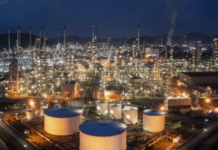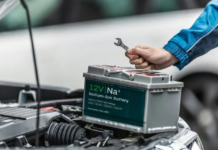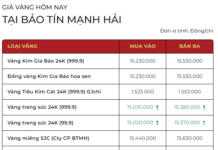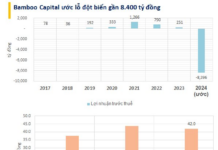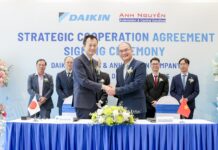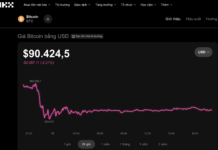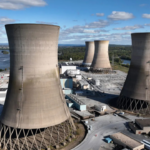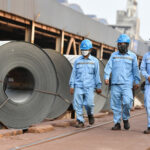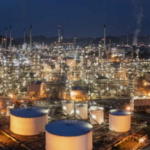At the seminar “Reducing the proportion of crude protein in livestock feed for pigs – a multi-beneficial impact” held by the Vietnam Livestock Association on October 31, 2024, Dr. Nguyen Xuan Duong, Chairman of the Vietnam Livestock Association, stated: Livestock is one of the sectors that emits a significant amount of greenhouse gases, which contribute to climate change. The control of greenhouse gas emissions in livestock farming has long been indicated by scientists and is being encouraged by many countries, with plans to eventually make it mandatory for farmers to include in their emission control measures.
LIVESTOCK PRODUCES SIGNIFICANT GREENHOUSE GAS EMISSIONS
Dr. Nguyen Xuan Duong pointed out the factors that influence emissions in livestock farming, including the use of electricity and energy in feed processing plants; electricity and energy consumption in farming and incubation processes; and the respiration, digestion, and waste of livestock.
Currently, several businesses have voluntarily adopted technology and equipment to monitor carbon indices in feed processing plants. Many large farms have treated livestock waste using biogas and bio-bedding technology to reduce environmental pollution and greenhouse gas emissions caused by livestock waste. Most of these farms specialize in dairy farming or closed industrial pig farming, such as THmilk, Vinamilk, CP, and Mavin…

According to Dr. Nguyen Xuan Duong, to achieve the commitment of reaching Net Zero by 2050, livestock farming, like all other sectors, will have to reduce greenhouse gas emissions. Decree No. 06/2022/NĐ-CP dated January 7, 2022, regulates the reduction of greenhouse gas emissions and the protection of the ozone layer, including provisions that require emission inventories for production and business establishments with emissions of 3,000 tons of CO2/year or 65,000 tons of waste/year. If this regulation is applied, there will be over 4,200 livestock farms in Vietnam with a scale of 1,000 buffaloes or cows, or 3,000 pigs that will have to conduct greenhouse gas inventories from 2024.
“The solution of using a reasonable diet and supplementing with preparations to limit the emissions of livestock has been approached in the last few years, but mainly in the scientific research stage, and the application in mass production is still moderate.”
Dr. Nguyen Xuan Duong, Chairman of the Vietnam Livestock Association.
Additionally, Mr. Nguyen Ngoc Son, Vice Chairman of the Vietnam Livestock Association and Editor-in-Chief of the Journal of Livestock Science and Technology, stated that as of the end of June 2024, the country’s total pig herd was 25.549 million, including 3 million sows. Vietnam ranks 5th in the world in terms of pig population and 6th in pork production. About 11 million tons of pig feed are produced annually, accounting for about 56% of the feed industry’s structure.
THE NEED FOR A SHIFT IN LIVESTOCK FEED
According to Mr. Ninh Ngoc Son, crude protein is the second most expensive ingredient in the pig feed formula. Protein is also one of the factors contributing to greenhouse gas emissions in livestock farming. Therefore, reducing the crude protein content in pig feed will not only bring economic and environmental benefits but also improve the welfare and health of the animals.
Elaborating on this issue, Dr. Ninh Thi Len, Vice President of the Vietnam Feed Association, said that there are two main types of greenhouse gases emitted in livestock farming: methane (CH4) and nitrous oxide (N2O). According to calculations by scientists, 1 ton of CH4 has a greenhouse gas effect equivalent to 28 tons of CO2, and 1 ton of N2O has a greenhouse gas effect equivalent to 265 tons of CO2. Since protein contains nitrogen, when animals digest this type of feed, they will excrete large amounts of N2O.
According to Dr. Ninh Thi Len, the main nutritional strategies to reduce nitrogen loss in livestock farming are to increase the digestibility of feed in general and nitrogen in particular. The solution to reducing greenhouse gas emissions through pig feed nutrition mainly aims to reduce the amount of nitrogen excreted in animal waste, thereby indirectly reducing N2O emissions. This solution is currently being emphasized in European livestock farming.
As of December 31, 2020, Europe has banned the use of soybean oilmeal from areas where forests are cleared for soybean cultivation. Denmark, a country with a developed pig farming industry, is implementing a strategy to reduce carbon emissions from livestock feed. Several renowned Danish feed companies have collaborated to find alternative ingredients for compound feed to achieve lower CO2 emissions.
Dr. Ninh Thi Len proposed several solutions for the feed industry, suggesting that to reduce feed costs, Vietnam should effectively implement the Decree on supporting investment in sustainable livestock development and the Project for the Development of the Feed Industry for the period 2021-2030.
The state should issue policies to reduce the tax on soybean oilmeal from 3% to 0% as it is a fully imported material that cannot be produced domestically. It is necessary to continue researching the conversion of part of the crop area to corn, cassava, and biomass corn cultivation for livestock feed.
Vietnam should also develop the production of protein-rich feed from insects (e.g., black soldier flies, cinnamon worms) and seaweed to partially replace soybean protein sources. Planning for fisheries processing facilities, livestock and poultry slaughterhouses, etc., will facilitate the collection and processing of by-products into animal feed.
Encourage businesses to invest in the technology to produce domestic raw materials with advantages such as probiotics, enzymes, herbs, multiminerals (stone powder, MCP, DCP…), trace minerals (CuSO4, FeSO4…), and herbs.
The Evolution of Safe High-Speed Rail: A Global Perspective on Accident-Free Networks.
The key advantage of the North-South high-speed rail network is its safety. A prime example is Japan’s Shinkansen, which has been operational since 1964 and has an impeccable safety record with zero accidents to date. This trend is echoed globally. High-speed electric railways are environmentally friendly and offer a safe and sustainable mode of transport.
The Unrivaled Location for Nuclear Power in Vietnam
These locations are deemed to be highly prospective and safe, thoroughly researched, and unlikely to be replaced by alternative sites, as per the 2022 Congressional Economic Committee’s monitoring report.
The Carbon Conundrum: A Late Market Start – Will Power Players in Electricity and Steel be Left in the Lashes?
The cost of a carbon credit for a ton of steel currently trades at around 80 to 100 euros. By 2030, this figure could soar to 300 euros, a threefold increase. Experts warn that this will impact hundreds of businesses in our country, with far-reaching consequences for the economy and society at large.
The Vice Premier: Unraveling the Intricacies of Domestic and Global Carbon Market Dynamics
On August 22, Deputy Prime Minister Tran Hong Ha chaired a meeting to provide feedback on the draft proposal for developing a carbon market in Vietnam.



